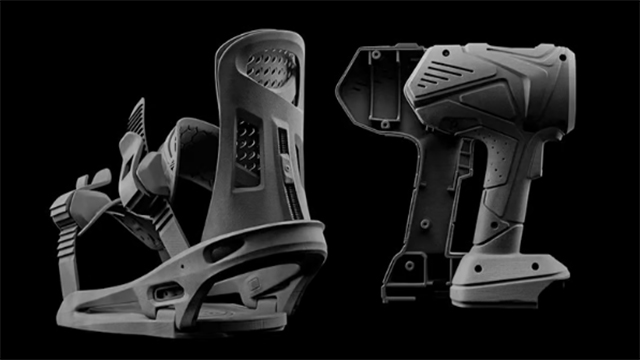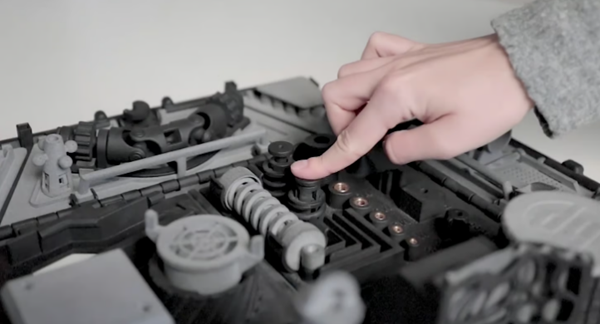BETTER TOUCH BETTER BUSINESS
Contact Sales at Lori.
Nylon is a strong and versatile 3D printing material that is ideal for a variety of professional applications.
Parts made from tough and durable nylon (also known as polyamide or PA) are everywhere. It makes the vents and intake manifalls in cars durable and lightweight, it enables artificial turf to be used continuously in professional football games, it houses most of our electronics, and it's used to make everything from skateboards to factory gears.
Characteristics of nylon: Durability, Flexibility, Chemical resistance, Impact resistance, Light hygroscopic (easy to stain), Sun resistance, High-melting-point, Wear-resistant, Lighter than metal,Electrical insulation.
With 3D printing, the speed of creating custom high-performance nylon prototypes and end-use parts is fast, which is a major advantage over traditional manufacturing.
Let's talk about nylon that can be used for 3D printing (also known as additive manufacturing).
Nylon for 3D printing comes in both filament and powder, and more types of nylon are entering the market every year. There is "filled" nylon, that is, nylon infused with carbon fiber, glass or other materials; There are recycled nylon and composite nylon; There is also a new class of so-called "sustainable Nylons", which are made from renewable resources. Nylon is considered an environmentally harmful material because it is made from a synthetic polymer derived from fossil fuels. Here, we'll explore nylon and which 3D printing technology works best for it. Let's get started!

The three top 3D printing technologies used to produce nylon parts are:
Fused Deposition Modeling (FDM)
Selective laser Sintering (SLS)
And Multi-Jet Fusion (MJF)
Let's talk about nylon multi jet fusion 3d printing.
The Lori Multi Jet Fusion 3D Printing Trick Box is a display piece printed in nylon 12 and other nylon materials, showing the various parts available for Multi Jet Fusion
MJF is a unique powder-based 3D printing technology developed by Lori. It is similar to SLS, but also has one or two things in common with adhesive spray.
In the Multi Jet Fusion process, the radiation-absorbing ink is introduced into the powder bed through the print head. Areas that do not need to be printed are cooled using a second printing liquid, a refiner. After each layer is printed, an infrared lamp is used to channel energy into it. This process sequence is repeated until the entire structural volume of the work box has been filled and the required parts within the powder bed have been printed. Unlike other binder Jet printing technologies, Lori Multi Jet Fusion prints each layer of new material and agent on top of the previous layer, which is still in a molten state, allowing the two layers to fully fuse, thus printing a robust part directly from the powder bed.
While both technologies can print out some amazing details on parts, MJF beats SLS when it comes to printing details. This is partly thanks to the detail primer, which makes the edges as clear as possible by slightly reducing the melting potential energy at the edges of the parts.
While the SLS may have the edge over the MJF when it comes to color selection, that may be coming to an end with the latest addition to Lori's MJF line, the white nylon PA12. It has similar characteristics and properties to standard PA12, including easy absorption of dyes, but at a slightly higher price.
After printing is complete, you can recover the unsintered powder, just like SLS. However, MJF can reuse even more powder, up to 80%. While much depends on the specific machine you're comparing, MJF machines are comparable in price to industrial SLS machines, but have faster print times and potentially more detail.

Lori is not the only 3D printer manufacturer to introduce heat into what appears to be an adhesive jet process. Voxeljet has developed a technique called "High Speed Sintering" (HSS), in which a thin layer of plastic powder, such as PA 12, is applied to a heated building platform. The inkjet printhead then moves over the entire surface of the platform, wetting or penetrating various areas of the building platform with infrared light absorbing ink. The building platform is then illuminated with infrared light, and the inkjet area absorbs heat, sintering the powder layer below, while the non-inkjet powder remains loose. The sintered parts are cooled in a controlled manner in the construction area before they can be removed and unpacked. Unlike the Lori process, the HSS process does not require a second printing fluid.
Lori can provide you with a variety of 3D printed nylon parts with our multi jet fusion process, you are welcome to upload the 3D model, we can provide you with an instant quote.
Copyright © 2025 Shenzhen Lori Technology Co.Ltd. | All Rights Reserved.